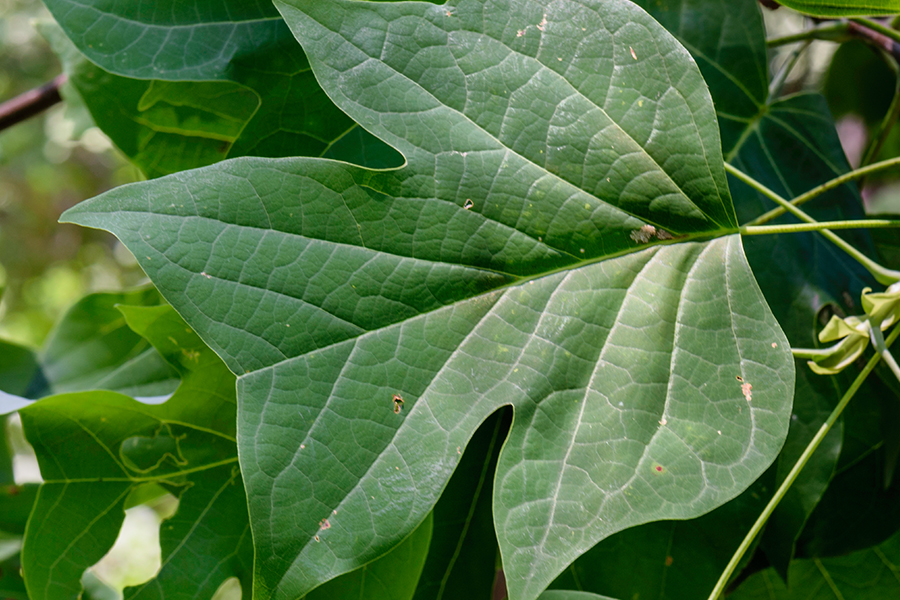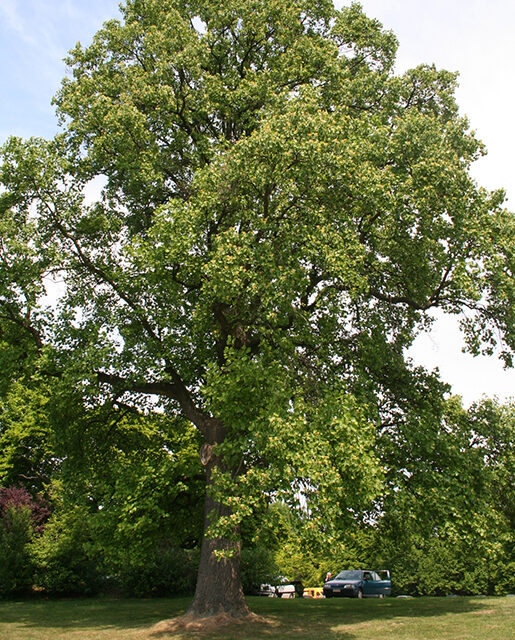Liriodendron tulipifera
The tulip tree is one of the largest trees native to North America and has distinctive tulip-shaped leaves and large tulip-shaped flowers.
Location
You can find tulip trees all over the arboretum. See if you can spot them by the entrance on Lovell Street, or as you’re walking up Hidden Spring Trail from the corner of May and Lovell Streets.


History at Hadwen
We have documents showing Hadwen planted tulip trees on the property at least as early as 1865. He planted one around 1860 which grew to over eighty feet high by 1900. In a speech, he lectured that the tulip trees are “proving a great favorite on extensive grounds, and being of rapid growth soon become a stately tree.” He also posited that “it is one of the noblest trees in good soil.” Tulip trees have been documented on the property ever since.
Keep Learning
Detailed Species Information
The tulip tree is a deciduous tree in the family Magnoliaceae native to the eastern United States. It is one of the largest trees in North America, typically growing up to 70–90 feet (21–27 meters) in height and up to 4–6 feet (1–2 meters) in trunk diameter. The tree’s bark is brown and develops deep furrows with age. The light green leaves are four-lobed and have a distinctive tulip-like shape, hence the common name of the tree. Its large yellow-green flowers with orange markings also resemble tulips and attract bees and other pollinators. The tree prefers moist, rich soil and is generally shade intolerant.
The tulip tree is valued for its wood, which is easy to work and inexpensive. The lumber is commonly used for siding, furniture, flooring, veneers, and musical instruments such as pianos. The tree is also prized in landscaping as a shade tree and ornamental due to its tall, straight trunk, unique leaves and flowers, and fast growth rate.
